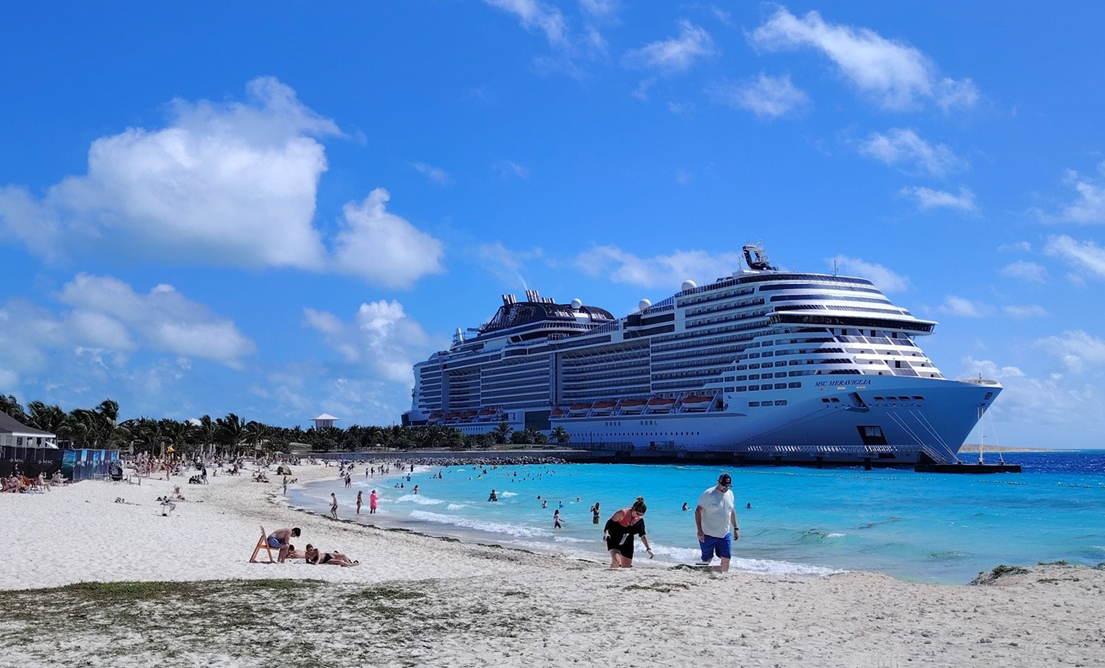Bahamas' Tourism Success: Lessons for the Philippines
The Bahamas has transformed its tourism sector into an economic powerhouse, with tourism contributing approximately 50% to its Gross Domestic Product (GDP) and employing nearly half of the country’s workforce. This remarkable success is largely attributed to the strategic development of cruise tourism, which has become a significant driver of visitor arrivals.
Like the Bahamas, the Philippines is an archipelago with even more islands and a broader array of natural and cultural attractions. However, its tourism industry has yet to reach its full potential. There is much to learn from the Bahamas—how it developed its tourism sector, the challenges it faced, and how it overcame them. Understanding their future plans and anticipated challenges can also provide insights into how the Philippines, particularly Samar, can position itself to benefit from sustainable tourism growth.
 Strategic Development of Cruise Tourism
Strategic Development of Cruise Tourism
The Bahamas' focus on cruise tourism dates back to the mid-20th century, when the country made significant investments in port infrastructure and established partnerships with major cruise lines. A game-changing move was the acquisition of private islands by cruise companies, such as Norwegian Cruise Line’s purchase of Great Stirrup Cay in 1977. This model provided exclusive destinations for passengers, further enhancing the Bahamas' appeal to cruise tourists.
These collaborations significantly boosted visitor numbers, with the Bahamas welcoming over 7.8 million cruise passengers in 2023. The success of cruise tourism has created a steady stream of revenue while promoting sustainable economic growth.
Personal Experience: MSC Meraviglia Cruise to the Bahamas
During a recent voyage on the MSC Meraviglia, we visited Ocean Cay and Nassau, the capital of the Bahamas. Ocean Cay, a private island developed by MSC Cruises, is designed exclusively for cruise passengers, featuring pristine beaches and various recreational activities. Nassau, with its vibrant culture, colonial history, and lively markets, offers a deeper look into Bahamian life.
While these sites were captivating, the Philippines boasts a wider variety of natural wonders and cultural heritage sites that remain largely underexplored. The question remains: How can the Philippines replicate or even surpass the success of the Bahamas in tourism, particularly in cruise tourism?
Comparative Analysis: Tourism in the Bahamas vs. the Philippines
1. Economic Contribution
- Bahamas: Tourism contributes approximately 50% of GDP, making it the lifeblood of the economy.
- Philippines: In 2023, tourism accounted for 8.6% of GDP, highlighting significant room for growth.
2. Diversity of Destinations
- Bahamas: A collection of small islands with a strong focus on beach tourism and cruise experiences.
- Philippines: An archipelago of over 7,000 islands, offering diverse attractions, including white-sand beaches, mountains, historical sites, and rich biodiversity.
- Popular destinations like Palawan, Cebu, and Boracay are well-known internationally.
- Samar Island, with its untapped and undiscovered gems, has the potential to become a major player in Philippine tourism.
3. Geographical Advantage
- Bahamas: Located near the United States, making it a convenient and attractive destination for North American tourists.
- Philippines: Strategically positioned in Southeast Asia, with strong potential to attract tourists from China, South Korea, Japan, and Western countries.
- Some cruise ships already include the Philippines in their itineraries, but the market is still relatively small compared to countries where cruise tourism is at its peak.
4. Cultural Richness
- Bahamas: A distinct Caribbean culture, heavily influenced by African, British, and American traditions.
- Philippines: A unique cultural melting pot, shaped by indigenous traditions, Spanish heritage, American influence, and Asian diversity.
- Every Philippine region offers a distinct cultural experience, making it ideal for a diverse, multi-destination cruise itinerary.
Challenges and Opportunities
Challenges in the Bahamas
Despite its success, the Bahamas faces several tourism-related challenges:
- Environmental Concerns: Large-scale cruise developments have led to habitat destruction and ecological imbalance.
- Economic Dependency: The heavy reliance on tourism makes the economy vulnerable to global recessions and travel disruptions.
- Climate Vulnerability: Hurricanes and extreme weather events threaten tourism infrastructure and local livelihoods.
Challenges in the Philippines
Similarly, the Philippines struggles with:
- Underdeveloped Infrastructure: Many tourist destinations lack efficient transport, modern ports, and reliable road networks.
- Samar, for instance, has great tourism potential but suffers from poor road conditions.
- Environmental Degradation: Unregulated tourism has led to pollution, coral destruction, and deforestation in some areas.
- Marketing and Branding: The Philippines lags behind in international tourism promotion, making it less competitive compared to other tropical destinations.
However, the Philippines has one major advantage: a diverse tourism portfolio that can be expanded beyond just beaches and cruise tourism.
Lessons for the Philippines
To replicate and surpass the Bahamas’ tourism success, the Philippines should consider the following:
Strategic Partnerships
- Engage in public-private partnerships to attract investments in cruise ports, resorts, and eco-tourism ventures.
- Collaborate with major cruise lines to develop exclusive island destinations, similar to what the Bahamas did.
Infrastructure Development
- Invest in world-class ports, better roads, and reliable transport networks.
- Samar, for example, could explore small-scale cruise tourism, developing a model that showcases its natural beauty while addressing infrastructure concerns.
Sustainable Tourism Practices
- Prioritize eco-tourism, conservation efforts, and responsible tourism policies.
- Ensure that development projects do not harm local communities and ecosystems.
Cultural Promotion & Diversification
- Market the Philippines as a unique cruise destination that offers not just beaches, but cultural, adventure, and historical experiences.
- Highlight diverse regional attractions, ensuring that cruise itineraries showcase multiple facets of Filipino heritage.
A Call for Action: Can the Philippines Build a Cruise Tourism Industry Like the Bahamas?
The Bahamas’ tourism success did not happen overnight—it was the result of long-term planning, infrastructure investment, and strategic partnerships.
The Philippines, with its vast resources and rich cultural heritage, has the potential to surpass the Bahamas in tourism—but it requires deliberate action.
Is it time for the Philippines to develop a cruise-focused tourism strategy? Can Samar and other regions explore cruise tourism as a viable model? What needs to be done to ensure tourism truly benefits the local economy and communities?
One thing is certain: The Philippines has what it takes. Now, it must take the necessary steps.
